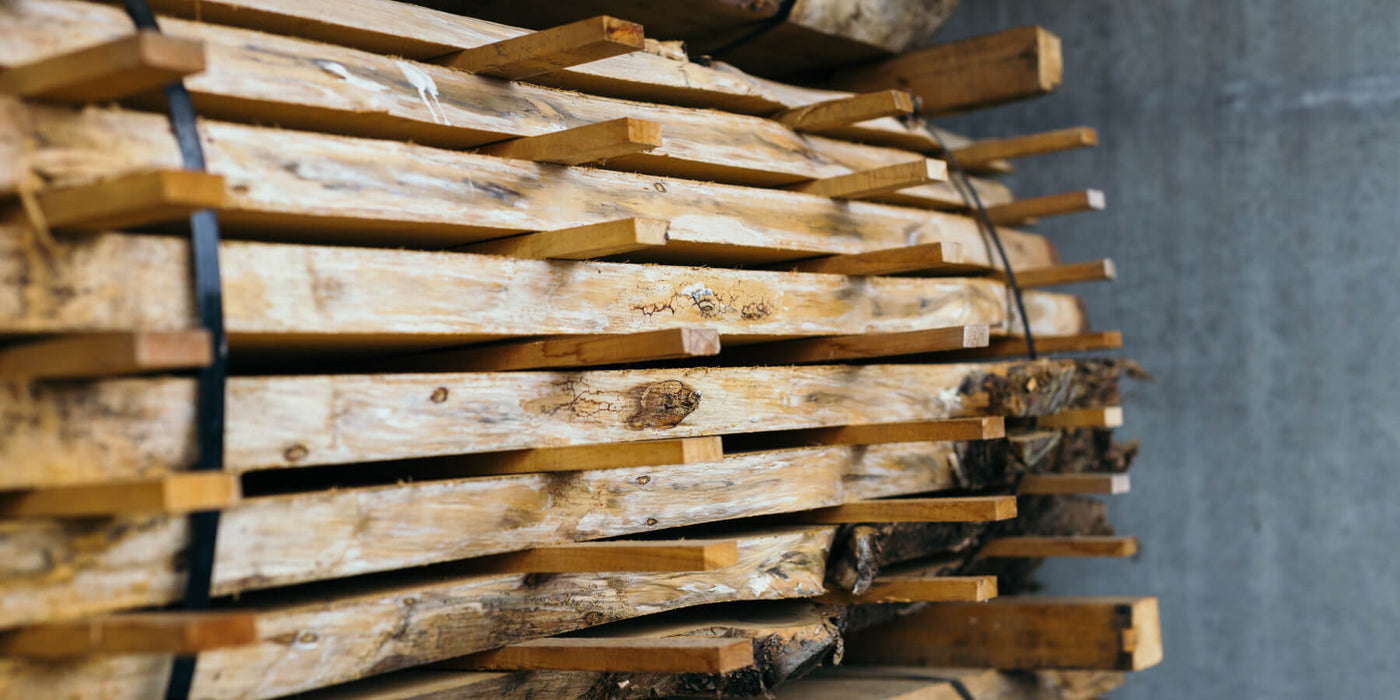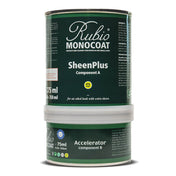This blog article will look deeper into the affect that moisture has on interior wood finishing surfaces like hardwood floors and wood furniture.
You may experience issues with wood under the influence of moisture, such as gapping, warping, or cupping, but not fully understand what is causing it. After reading this blog, you should have a better understanding of why you may experience unexpected and undesirable results with wood and how to avoid it in the future.
Unexpected or undesirable behavior means unwanted results. For example, warping, cupping, crowning, cracking, checking, splitting, compression set, or gapping.
The Nature of Wood
Moisture in Wood
Wood that is milled from a tree is not immediately ready for use on a building project. A tree is living organic material and, when alive and growing, contains vast amounts of water that needs to be removed from the wood before it can be milled and used. The Moisture Content, or MC, in a living tree, can be as much as 200%. An MC of 200% means there is twice as much water as there is wood.
Wood cells in the tree are hollow on the inside and are tubular in shape. Cells are oriented in the length of the tree.
The wood cells' hollow spaces are called “lumen” and contain liquid water called "free water." This is the water that travels from the tree's roots up to the leaves in the canopy. The water travels thru the outer part of the tree called "sapwood." This flow of water transports nutrients from the soil to the leaves, where it further gets used and transformed to support the life and growth of the tree.
When wood planks are to be milled from a tree, the excess liquid water needs to be removed to a level that the wood planks are dry enough to be milled into boards and fit for use on projects.
Airdrying
Before a log gets milled, they are typically placed and stacked in a log yard and dried by exposure to natural airflow. This is referred to as "airdrying." This process allows the liquid water (the free water in the lumen) to evaporate. Logs are typically set out to airdry until the MC is down to an average of about 28-30%. At this point, the weight of the logs has also been drastically reduced. The dimension of the wood cells has not changed yet as the cell walls still contain water. Milling rough boards or slabs may now be done.

Air drying wood. Source: Hewins Oak
Kiln Drying
The cellulose in the wood cells is "hygroscopic" in nature, absorbing water either in liquid form, as vapor, or under molecular diffusion.
When the wood cells cannot absorb more moisture, this is referred to as the "Fiber Saturation Point" or FSP. On average, the MC in the wood at that point is around 28-30%. The cellulose in the cell walls is still fully expanded to its maximum point and cannot take on any water. The water in the cellulose is not liquid. The cellulose bounds it, and therefore it is referred to as "bound water."
When the cellulose of the wood cells loses moisture and drops below the FSP, the dimension across the cell walls will also shrink. Shrinkage will be the most severe in the wood cells or grain width, but not in the cells' length.
During the kiln drying process, the remaining “bound water” in the cell walls is removed under the influence and force of heat, air movement, and humidity control in the kiln. The high temperature in a kiln typically also kills any insects or their larvae.
So, during this forced water evaporation process, the wood dimension will also shrink across the width and thickness as a result. Some deformation of the board may occur under the internal stresses it is exposed to.

Kiln drying wood. Source: Core77
Once dry, the kiln-dried lumber can now be milled into usable lumber for wood flooring, trim, moldings, or furniture.
Wood intended for interior use is typically kiln-dried to an average of 6-8% MC.
Controlling moisture in wood
Acclimation
Ideally, before using milled boards to install a hardwood floor or other projects, the wood should acclimate to the average living conditions the project will be exposed to during general use. Once the wood has reached a steady average MC, the wood has reached its "equilibrium moisture content" or EMC and is ready to be used.
The EMC level for most of North America is between 6-8% MC. Still, in coastal and damp geographic locations, it may be as high as 12%.
Once the milled boards have been transformed into a hardwood floor, door, table, or cabinet, it will be exposed to Relative Humidity (more on RH later), in its ambient environment where it will be put into service.
Finishing
Wood substrates usually get finished with a wood finishing product. This may be paint, a traditional polyurethane, or a hardwax oil finish like Rubio Monocoat’s Oil Plus 2C.
Which product the wood is finished with does not really matter much. The applied finish only delays RH from absorbing into the wood. Eventually, moisture in vapor form will migrate thru the applied finish into or out of the wood when exposed to extreme and long-term variation in RH.
Controlling expansion and shrinkage
For wood flooring or furniture and other interior wood millwork to perform correctly, it is essential to avoid or reduce undesirable and excessive expansion and shrinkage. We know from the above explanation that wood will move when it either absorbs moisture or releases it.
So, it is crucial to control exposure to wild and long-term swings in RH. That may be easier said than done, but it still is vital to maintain a relatively stable interior RH environment to avoid unwanted and excessive movement in the wood.
Depending on the geographic location and climate, RH may vary significantly in an interior environment during seasonal changes.
For example, a Midwest house location has seasonally hot summers and extremely cold winters. In the summer, it is not unusual to have an RH of up to 70%. The RH may drop well below 20% during the winter heating season inside a structure. When RH is not managed well in such environments, the wood will, as a result, expand in the summer. And will shrink, often excessively, during the dry heating season of the winter.

Source: Wood-database.com
Controlling Indoor Relative Humidity
Often in the summer, homes have air-conditioning running to keep temperatures at bay inside. As a result, RH is, therefore, also somewhat controlled. But, in the winter, when the heat comes on, the RH drops to low levels.
Sometimes, no, or an insufficient humidity regulating method is present in the structure, or perhaps the equipment may be malfunctioning. This can result in the MC falling or raising to the point of causing unexpected or undesirable behavior in the wood substrate.
When RH is too low, the MC of the wood begins falling and shrinkage occurs across the width or thickness of the board, and consequently, open gaps show on joints between boards in wood flooring or doors and millwork.
In low RH risk-prone situations, supplemental humidification equipment can be helpful.
On the other hand, when interior RH gets very high for long periods, MC begins to increase and excessive expansion in wood may exhibit and result in cupping or crushing of board edges. In severe cases, buckling may occur.
In high RH risk-prone situations, supplemental dehumidification equipment is often required. Basements and crawlspaces often create such risk-prone areas.

Supplemental dehumidifiers
Some expansion and shrinkage in wood interior environments are normal and expected to a certain degree, as long the indoor RH is reasonably controlled. This normal wood movement is often referred to as "movement in service."
Often the applied wood finishing system or products get wrongly blamed for problems related to not controlling the RH in an indoor environment.
Organizations like the EPA and NWFA recommend a healthy and "normal" indoor environment to maintain an indoor RH between 30-50%. Optimal conditions may vary slightly in different geographic areas based on average moisture content and RH.
To monitor the RH indoors, it is a good idea to place a hygrometer in several locations throughout a building.
By keeping the RH within the 30-50% range, the degree of expansion and shrinkage of indoor wood is gentler and will result in smaller dimensional movement.
We hope that this blog gives you some insight into the nature of wood and how it behaves with moisture exposure. By controlling the RH in a house, undesirable movement in finished wood can be reduced greatly!


